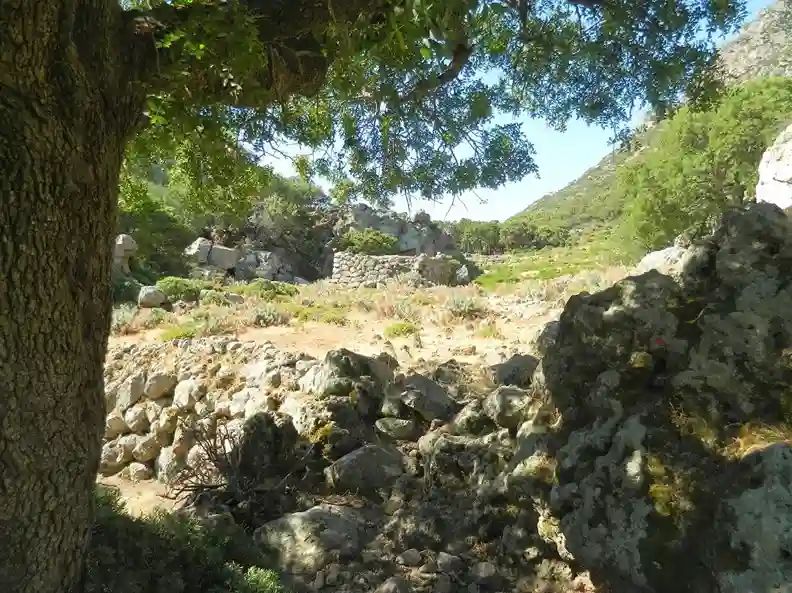NO NAMED GPX
Profile
Description

Perhaps the most interesting path, leading to the highest peak of Nisyros (698m above sea level).
Set off very early in the morning – be well prepared for the climb. There is a paved road up to Evangelistra monastery. The climb begins at Evangelistra monastery; the time it takes to the top is an hour of regular paced walk without stopping.
First walk for a few minutes along the path over the southern cliffs of the caldera and as soon as you arrive at the point where the lavas of the dome of Pr. Ilias contact the caldera, make a left turn and start ascending on the dacites of the latest volcanic eruption on the island.
The first part of the path is negotiable and clearly viewed; care is required so as to avoid straying off between 450-500 meters. Sixty meters lower than the top, after crossing the kermes oak forest in the northwestern slope of the dome, 638 meters above sea level you will find the ‘suspended garden’ of Diavatis. It is an oasis of tall trees – walnut, fig, pear trees etc, in a circular plateau surrounded by a tall fence. This circular formation is in fact a collapsed crater from the dome of Profitis Ilias; such formations are common in domes, created during the final eruption phase, when magma was cooled.


A little white dwelling is at the entrance to Diavatini; the lava of its cistern is inscribed with a year mark: 1749. The church situated behind the dwelling is dedicated to the Holy Mary (Panayia Diavatini or Galaktoforousa) and contains impressive murals, possibly of the 17th century. Some cells in poor condition are opposite the church; they once accommodated the nuns of the monastery.
Keep treading the path and in a few minutes you will arrive at Profitis Ilias top with the obligatory chapel, 698 meters above sea level. It rewards you with a unique view in all directions, particularly to the caldera and the hydrothermal craters. Those that still have stamina can move to the south of Prof. Ilias and admire the Agios Pandeleimonas chapel, on the saddle upstream of the Trapezina.


Watch the rocks closely on your way back. You will notice several rounded fragments of a darker purple rock in the ash-pink dacites. This is an andesite that penetrated the dacite magma chamber and both were propelled up to the surface.
We recommend that you return via the majestic Nyfios plateau, where you will find: -the only signs of a Minoan temple with sanctification horns remain intact at the peak, and traces of inhabitation; -possibly a sanctum of the Nymphs (hence the name ‘Nyfios’) in a carved cave, presently accommodating the church of Agios Ioannis Kalyvitis; -a monastery complex dedicated to Christ the Nymfios, containing interesting murals. The return from Nyfios may follow a 30 – minute descent down a path leading both to Evangelistra and to Lakki. The crossing is dominated by the faces of the lava flows fed by the Mporiatikos dome.


If you return via Evangelistra, make a short stop at the monastery where you can drink some cool water from the cistern found in its yard, enjoy the cool breeze under the branches of the huge terebinth; then continue your way down to Kato Lakki. A characteristic andesitic lava neck dominates the root of the northern cliff of the caldera.





























































































































































































































































































































































